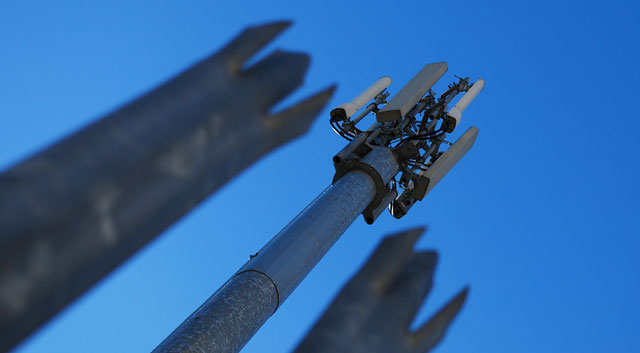
Despite its precarious financial situation, South Africa’s fourth mobile operator, Telkom Mobile is in a “prime position” in wireless broadband compared to rivals Vodacom, MTN and Cell C thanks to a huge chunk of radio frequency spectrum it has access to that allows it to build a fast and reliable long-term evolution (LTE) network.
That’s the view of Tim Parle, senior consultant and telecommunications sector specialist at BMI-TechKnowledge. Parle is co-author, with Brian Neilson and Martyn Roetter, of a new BMI-T report, “The outlook for LTE in South Africa and Africa: issues and opportunities”.
Unlike its larger mobile rivals, which have had to “refarm” (reallocate) their existing GSM spectrum allocations in order to offer next-generation LTE services, Telkom has been able to repurpose a huge 60MHz chunk of spectrum in the 2,3GHz band, which it used previously for microwave backhaul, for delivering LTE to consumers.
Telkom’s rivals are still waiting for government to issue a policy describing how it wants telecoms regulator Icasa to allocate spectrum at 2,6GHz and 800MHz — the latter being one of the so-called “digital dividend” bands that will be freed up when South Africa’s broadcasters eventually switch off their analogue transmissions in favour of digital systems.
Vodacom, MTN and Cell C are all building LTE networks using a flavour of the technology called FD-LTE (using paired frequency bands), commonly used by operators in Europe and North America.
Telkom, on the other hand, is using something called TD-LTE (using unpaired frequencies), which is used by operators in all markets but favoured by those in India and China, the world’s two most populous countries. Networks that use the 2,3GHz band typically use TD-LTE.
“Estimates by international research company Ovum suggest that around a quarter of the 700m LTE subscribers by 2016 will use TD-LTE given the preference of operators in India and China to use it,” says Parle. “TD-LTE is currently used by Telkom in South Africa and MTN in Uganda, and hence is very relevant to our domestic interests.”
According to Parle, LTE has been designed from the ground up for both FD and TD deployments, with interoperability between the two modes and as much commonality in equipment and devices for the two modes of operation as possible. Each has its advantages and disadvantages, however, with the industry divided on whether FD-LTE or TD-LTE provides the best latency performance.
“LTE will be deployed in a significantly greater number of frequency bands than earlier generations of mobile technology, and with a significant, although still minority, proportion of deployments in unpaired frequencies (TD-LTE) … as demand … encourages the allocation and reallocation of more bands (new spectrum) to mobile services and the exploitation of as much available spectrum as possible,” says Parle.
Telkom Mobile’s access to a wide chunk of spectrum at 2,3GHz has allowed it to demonstrate download speeds of more than 210Mbit/s, “albeit under ideal conditions”.
“With their current allocations in the 900MHz, 1,8GHz and 2,1GHz bands, Telkom Mobile’s competitors cannot use a full 20MHz carrier [for optimal speeds],” Parle says.
“TD-LTE does not require paired frequencies and can be used in ‘orphaned’ sub-bands created through ineffective planning and utilisation of spectrum [and] given that Telkom is the only player in the 2,3GHz band, they do not have to be as concerned about interference as their competitors.”
Parle says Telkom Mobile’s rivals have not started their LTE projects from the technically superior position they’d have liked and are “largely stuck with their GSM-centric spectrum allocations, leaving their 2,1GHz allocations for their [3G high-speed packet access] services”.
“Telkom has enjoyed a healthy advantage of being the only ‘tenant’ in 60MHz of spectrum,” he says. “This means it gets to exploit the capabilities of LTE more than its competitors by using a full 20MHz, rather than 5, 10 or 12MHz of spectrum. This gives the company significantly more headroom than their competitors.”
Telkom Mobile can also set the “uplink-downlink ratios” and, with later releases of LTE, use “multiple carriers” without having to worry about interference as much as its competitors. “Overall, Telkom Mobile will be in a better position to offer services more tailored to the market.”
The company’s position is also “likely to be advanced as the momentum increases with TD-LTE in China and India”.
“These huge markets will have great bearing on network equipment costs as well as consumer equipment device availability and costs,” Parle says.
“The net of the above is that Telkom’s position of being ‘spectrum rich’ provides it with advantages over the other operators,” he says.
“The choice of TD-LTE vs FD-LTE is perhaps not as significant. In short, Telkom is on the right track with LTE — this would be true independent of whether they had chosen TD-LTE or FD-LTE. The spectrum it has is what dictates their technology choice. It is not a case of ‘the tail wagging the dog’. Telkom Mobile is in the prime position because of this.” — (c) 2013 NewsCentral Media




